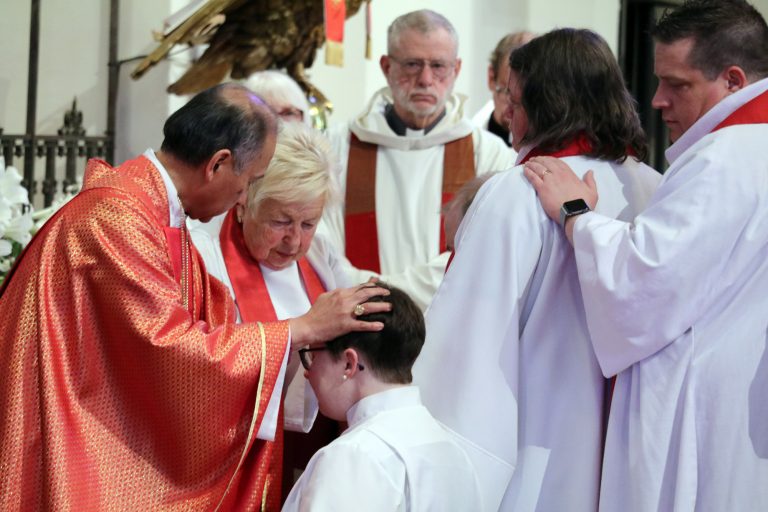This is another is a series of communications from the Nominating/Search Committee. The articles are designed to inform and educate the Diocese about the search process. This is from committee member Mary McEntire who adapted the article from material provided by The Rev. Ron Clingenpeel, consultant to the Nominating Committee.
For Episcopalians, the bishop is the symbol of sacramental unity connecting the past with the present and ensuring unity within the church. It was not long after the resurrection of Jesus that bishops were being consecrated from various areas in the same manner that the apostles commissioned their successors. This pattern continues today (three bishops are required to lay on hands in the consecration of a new bishop) as bishops serve the Diocese in which they have been called and they serve the greater church through bodies such as the House of Bishops and the Lambeth Conference (part of the greater Anglican Communion which meets every 10 years).
Bishops in the second century were seen as the guardians of the faith and order of the church (as Ignatius, Bishop of Antioch, who was martyred c. 108 CE, is often quoted, “Where the bishop is, there is the Church”). The bishop’s task was to embrace faithfulness to the truth of the Gospel and to the Great Commission (Mt 28:18-20) levied upon each of us by Jesus as his disciples. Thus, the bishop works within our church to guide each of us in our interpretation of the Gospel, helping us to base our actions on God’s guidance through the Holy Spirit, scripture, tradition and reason (Richard Hooker, an Anglican priest in the 16th century, is said to have compared the necessity of these last three criteria to a “three-legged stool”).
Bishops in The Episcopal Church perform much of this through direct oversight of God’s people in the congregations of each Diocese. (Sometimes a nervous priest will welcome the visit of the Bishop to his/her parish as an “honored guest,” neglecting to remember that the Bishop is the overseer of each parish in the Diocese). Their task is to be strategic in their policies and actions by providing the spiritual leadership for the further development of Christians and the spreading of God’s word to the people.
Historically, there are at least two models of Episcopal leadership that we can consider as important. The first associates the bishop with the oversight of a local congregation or a group of congregations. That model has Biblical roots. The second, which is drawn from Celtic Christianity, embraces the notion of missionary bishops. Cuthbert (see Lesser Feasts and Fasts) is a good example of this tradition. It was in this tradition that the American Episcopal Church consecrated Jackson Kemper in 1835 (who became known as “The Bishop of the Whole Northwest”). This tradition continued when Daniel Tuttle, age 30, was consecrated as a bishop in New York and sent west to the Utah Territory. He arrived by train and stagecoach in Utah in 1867. (Decades later, Daniel Tuttle served as Presiding Bishop of The Episcopal Church from 1903-1923).
The episcopacy in Utah seems to have fused both models of leadership. Our bishops have exercised oversight over a group of congregations. They have also led us into pastoral relationships among the indigenous people of our Diocese and with the Dioceses of Mexico and Myanmar.
In addition to spiritual matters within the Diocese, the bishop must be concerned with the application of the rules that we all have agreed upon in our democratically-based structure for governance. These rules, called canons, are the ultimate responsibility of the bishop to uphold. Occasionally, this may involve convening an Ecclesiastical Court to ensure that all parties are represented fairly and that adjudications are just.
Thus, we can see that the duties of a bishop require significant involvement in all areas of our church, both spiritually and administratively.


